Top Factors to Consider When Choosing a Wet Bench Manufacturer
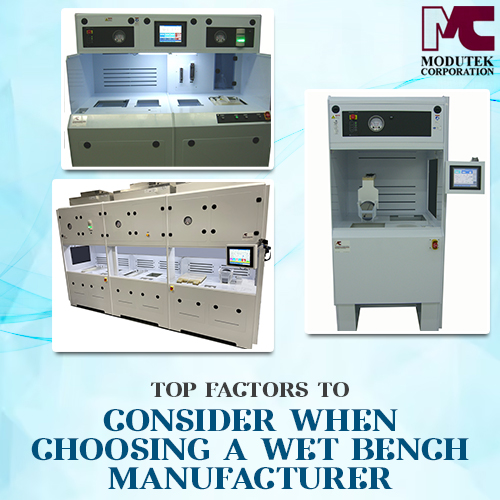
Selecting the right wet bench manufacturer is critical for ensuring the efficiency and safety of semiconductor manufacturing operations. A reliable manufacturer provides high-quality equipment and supports the seamless integration of these systems into existing facilities. This decision significantly impacts operational effectiveness, compliance with stringent industry regulations, and overall return on investment for a semiconductor manufacturing […]
Why Training and Support are Important for Wet Bench Operators
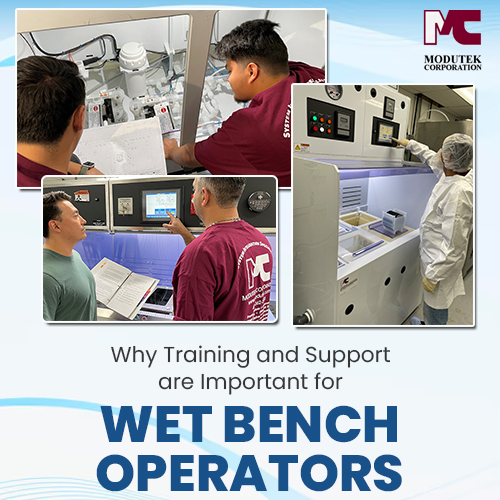
Semiconductor manufacturing relies heavily on wet bench systems for efficiency and reliability with various processes and handling of hazardous and sensitive materials. Therefore, their proper operation is essential for the safety and productivity of the operations of a facility. This article highlights why practical training from wet bench manufacturers is crucial to ensure optimal operations […]
Why Customization and Flexibility are Needed in Wafer Fabrication Equipment
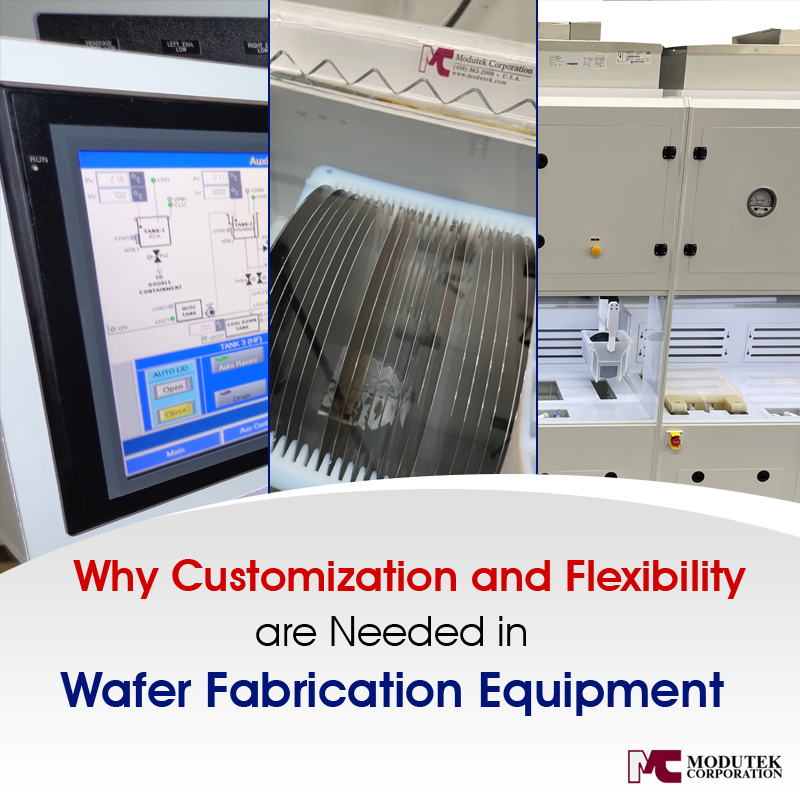
In the demanding world of semiconductor manufacturing, the wafer fabrication process stands out for its precision and stringent cleanliness requirements. Every stage of production requires equipment that meets exacting standards and aligns with each facility’s unique demands. In this context, the customization and flexibility of wafer fabrication systems and equipment are paramount. Process engineers face […]
Safety Protocols for Using Wet Bench Equipment
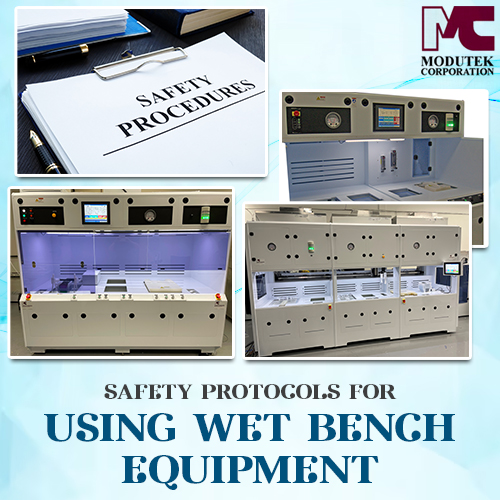
In semiconductor manufacturing and research lab environments, the importance of safety cannot be overstated. These environments, known for their intricate processes and delicate handling of materials, necessitate stringent safety protocols to protect both personnel and products. This is particularly crucial when dealing with wet bench equipment, a central component in the semiconductor industry for various […]
Why it’s Important to Buy from a Wet Bench Manufacturer with In-House Expertise
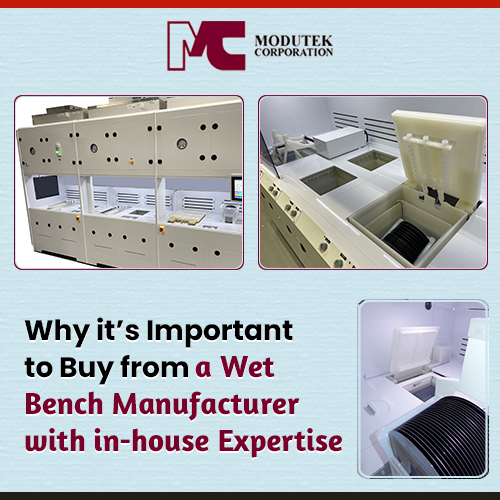
Selecting a wet bench manufacturer with in-house expertise is essential for numerous reasons, ensuring high-quality products while significantly impacting the efficiency, safety, and success of semiconductor manufacturing processes. Here are several key reasons why in-house expertise should be prioritized: Custom Solutions: Tailored designs and adjustments to meet specific process requirements that enhance operational efficiency. Quality […]
10 Quick Tips on Selecting Semiconductor Manufacturing Equipment
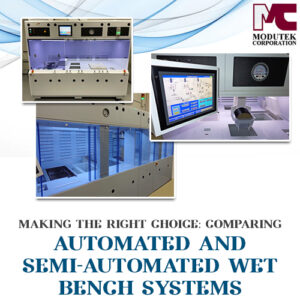
Editor’s Note: This article was originally published in August 2014 and has been updated with new information and reposted in October 2023. Facility and process management in the semiconductor industry requires meticulous attention to detail. Here we offer tips that encompass decades of Modutek’s experience, catering to technology professionals, including process engineers, facility managers, and […]
5 Things About Wet Benches You Should Know
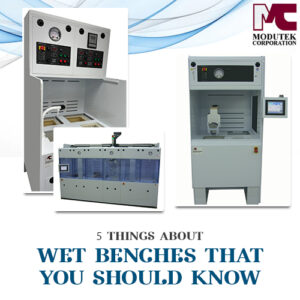
Editor’s Note: This article was originally published in February 2015 and has been updated with new information and reposted in October 2023. When you choose a reputable supplier of wet benches, your process can be efficient, flexible, and safe. Ideally, the supplier will be a manufacturer of wet bench equipment, performing most of the design, […]
How to Develop a Requirements List When Buying Wet Bench Equipment
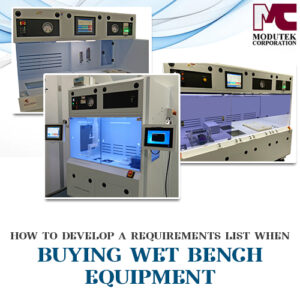
Editor’s Note: This article was originally published in March 2015 and has been updated with new information and reposted in August 2023. Wet bench equipment is an integral component that semiconductor manufacturing and research industries need. From cleaning, etching, stripping, developing, and testing new processes, it plays a vital role in these fields. The range […]
Making the Right Choice: Comparing Automated and Semi-Automated Wet Bench Systems

Wet bench systems play a vital role in various industries, providing essential support in manufacturing processes such as cleaning, etching, and surface preparation. When considering wet process operations, there are two primary options for wet bench systems – automated and semi-automated wet bench systems. These systems offer different benefits, applications, and considerations for use in […]
How Stainless-Steel Wet Benches Ensure Safety When Using Solvents
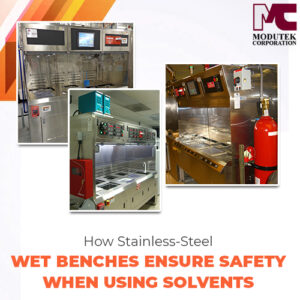
When solvents are used in stainless steel wet benches during semiconductor manufacturing, special measures are required to reduce the risk of fire or explosions. Solvents such as acetone are highly flammable. They are used for silicon wafer cleaning and stripping to remove contaminants from the silicon wafer and to remove photoresist. Essential safety measures include […]
